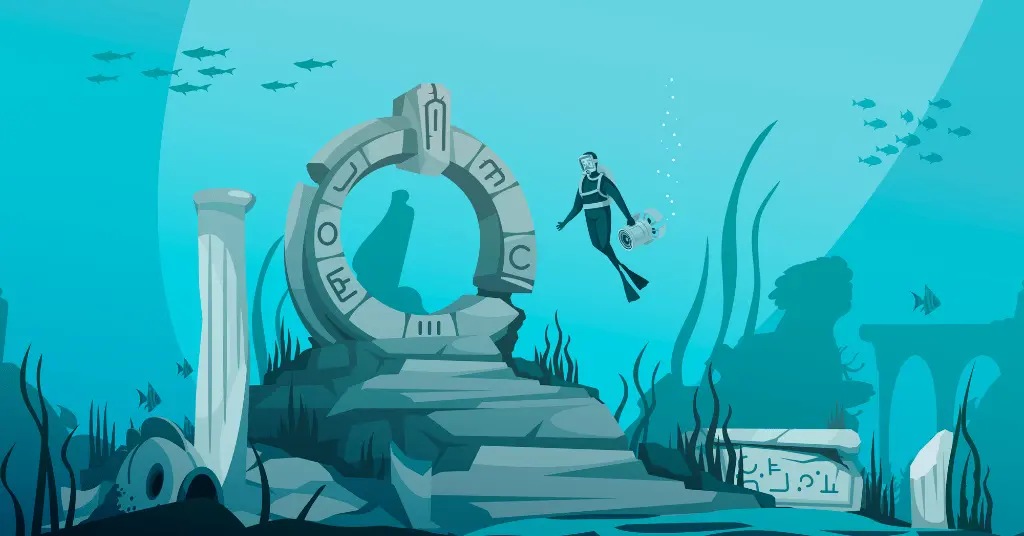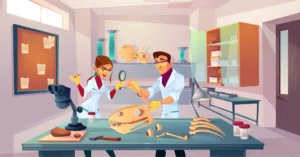AI Answer Evaluation Platform Live Now. Try Free Answer Evaluation Now
Maritime Archaeology

Maritime archaeology is the detailed study of human interaction with oceans, lakes, rivers and other water bodies through material remains like ships, vessels and cargoes etc. Maritime archaeology can evaluate submerged as well as off-shore shipwrecks. The sub-field differs from underwater archaeology and nautical archaeology in that it is a broader theoretical framework encompassing human seafaring activities and their technological, social, economical as well as political implications.
Emergence of Maritime Archaeology
In the early 1900s underwater excursions involved pursuit of artifacts and collectibles by untrained divers and antiquarians of sorts. The first research-oriented maritime archaeology developed with the advancements in diving gear like underwater goggles,aqualung and later the scuba (self-contained underwater breathing apparatus) [1]. Such breakthroughs enabled systematic studies all over Europe and America throughout the mid-twentieth century. Examples of nascent maritime excavations include Jacques-Yves Cousteau’s work at the Island of Grand Congloue in France (1950s) and George Bass’ excavation work on a 1200 BC Bronze Age wreck in Turkey (1960). However, many of these efforts lacked proper scholarly interpretation since these activities were not conducted by earnest archaeologists. John Goggin in his 1960 paper Underwater Archaeology: Its Nature and Limitations described the emerging sub-field as ‘salvage rather than archaeology’[2]. In many ways, this provided impetus for the development of maritime archaeology as a discipline concerned chiefly with submerged material cultures and understanding their socio-cultural and political contexts. This demanded a serious re-evaluation of the field itself and the perspectives it entailed.
Changing Perspectives
Marine archaeology just like its terrestrial counterpart went through several transformations in both theory and methodology. In the 1970s, the advent of processual archaeology inspired Keith Muckelroy to realize this deeply analytical field as a scientific study. Muckelroy published the book Maritime Archaeology and effectively proposed brand new mechanisms to understand the role of ships and their contexts as markers of cultural systems [3]. The discipline thus, had its name coined and solidified as a promising domain of theoretical archaeology. The 1980s also saw a paradigm shift in archaeological research which transformed its maritime sub-field. The rise of post-processualism called for a materialistic approach in the domain which highlighted the nature of maritime technology with reference to economy and commerce.[4]
Methodology
In maritime archaeology sites are investigated and results are measured using the same techniques as in terrestrial archaeology. Scientific dating methods, laboratory procedures and stratigraphy remain the same. Similar principles of paleontology and geology are applied in maritime excavations. Additionally, technology has improved maritime research using GIS, Ground Penetrating Radars and satellite imagery to provide accurate results.
Objectives of Maritime Archaeology
Maritime archaeologists pursue assemblages related to ships, vessels and other associated materials. The fundamental goal is to interpret these finds, ascertain their nature and speculate their origin with reference to human activity. As such, ships and shipwrecks are the most common case studies. Ports and trade centers near the coast have also been excavated. Maritime archaeologists have attempted to test the validity of ancient migrations in the world, like the arrival of human beings in Australia. However, many studies continue to address simpler anthropological phenomena like boat-building traditions of different cultures. (Gould & Gould, 2000, 15)
Scope of Maritime Archaeology
- Through glacial and interglacial periods the sea-levels continue to rise and fall. Maritime archaeology allows the study of regions that were once on land but have now become submerged.[5]
- The sub-field is not confined to any time or era. Medieval-era wreckages as well as Naval ships from the World War have been studied in maritime archaeology.
- Environments below the water could allow better preservation of certain cultural remains than on land. This can help in uniquely studying past human behavior.
- Because of its starkly theoretical nature, maritime archaeology can also immensely help in critically addressing social, cultural and political issues by investigating past seafaring activity from colonial and other historical periods. Fred Mcghee tackled these issues in his 1998 paper – ‘Towards a Postcolonial Nautical Archaeology’.[6]
Limitations of Maritime Archaeology
- Working underwater can be highly dangerous with limited visibility and risk to life.
- Diving requires arduous training and expensive diving equipment which not all archaeological departments can afford.
- The preservation of artifacts can be affected by climatic conditions and organisms living underwater. Wooden material can get decomposed and destroyed.
- The constant ethical and theoretical debates may impair the sub-field and its development in future studies.
Conclusion
The essence of maritime research in archaeology has been highlighted and distinguished from other similar forms like Underwater Archaeology. Its conception as a ‘treasure hunting’ activity has been addressed along with nascent diving attempts to uncover past human interactions with marine environments. The changing perspectives in Maritime Archaeology revolutionized how theories were applied anthropologically to ships and shipwrecks. These developments, albeit controversial, were essential in establishing maritime archaeology as a promising domain of research with a holistic approach and endless scope. Lastly, the limitations of the sub-field are mentioned to showcase the dangers and financial challenges it constitutes.
See Also
References
[1] Meide, Chuck 2013 The Development of Maritime Archaeology as a Discipline and the Evolving Use of Theory by Maritime Archaeologists. Dissertation Position Paper No. 2, on file at the Department of Anthropology, College of William & Mary, Williamsburg, Virginia
[2] Goggin, J. M. (1960). Underwater Archaeology: Its Nature and Limitations. American Antiquity, 25(3), 348–354. https://doi.org/10.2307/277518
[3] Muckleroy, K., 1978. Maritime Archaeology. Cambridge University Press
[4] Gould, R. A., & Gould, R. A. (2000). Archaeology and the social history of ships. Cambridge University Press.
[5] https://researchoutreach.org/articles/coastline-evolution-rise-fall-sea-level-time/
[6] McGhee, Fred L. 1998 Towards a Postcolonial Nautical Archaeology. Assemblage 3 http://www.shef.ac.uk/~assem/3/3mcghee.htm.
Additional Reading
Matthew Harpster (2009). Keith Muckelroy: Methods, Ideas andMaritime Archaeology. , 4(1), 67–82. doi:10.1007/s11457-009-9045-2




